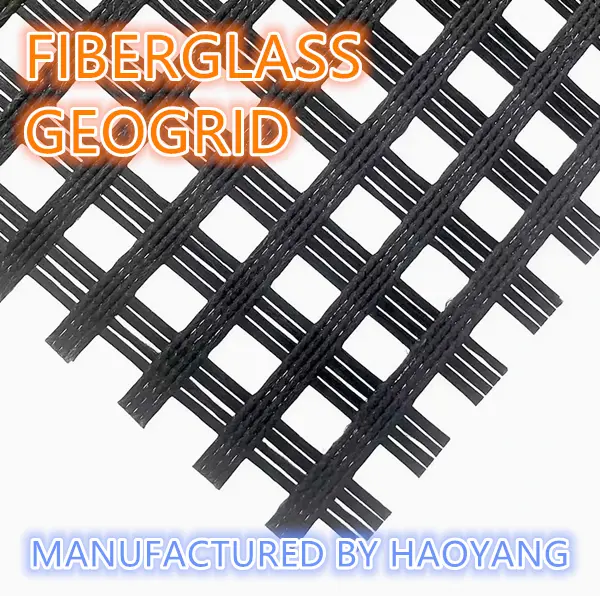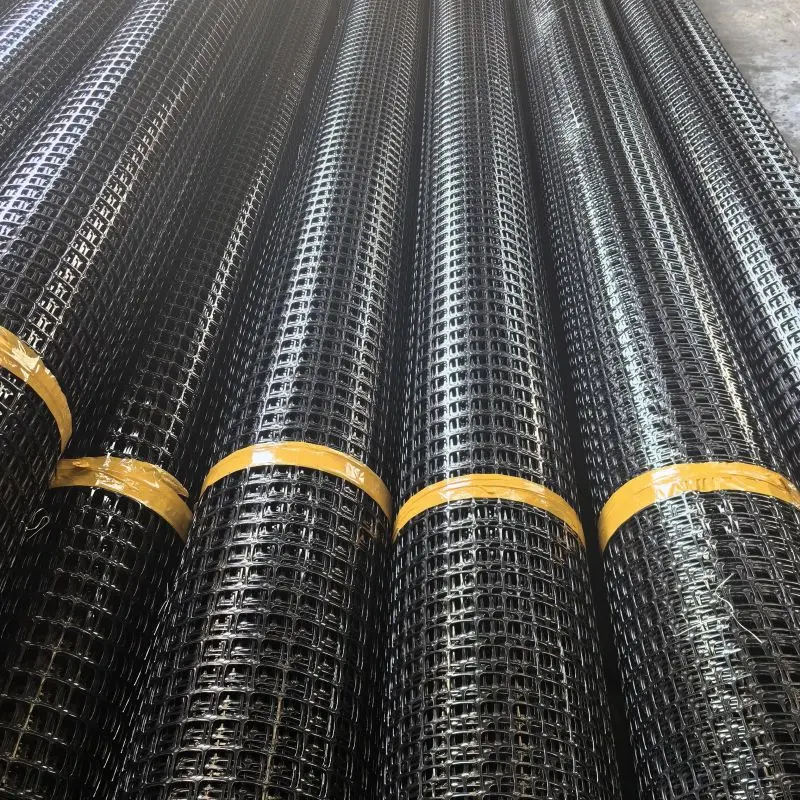Fiberglass geogrids are a vital component in modern civil engineering, particularly in the stabilization of base layers for roads, highways, and other construction projects. These geogrids are made from high-strength fiberglass filaments that are woven into a grid structure and coated with a protective layer, typically polymeric or bituminous, to enhance durability and resistance to environmental factors. This article delves into the properties, advantages, applications, and installation procedures of fiberglass geogrids for base stabilization.
Properties of Fiberglass Geogrids

High Tensile Strength:
Fiberglass geogrids exhibit superior tensile strength, making them ideal for reinforcing base layers and improving load-bearing capacity.
Low Elongation:
They have minimal elongation, which helps in maintaining the structural integrity of the stabilized base over time.
Thermal Stability:
These geogrids are resistant to high temperatures, which is essential for their application in asphalt layers and other environments exposed to significant thermal variations.
Chemical Resistance:
Fiberglass geogrids are resistant to chemical degradation, ensuring long-term performance in various soil conditions and exposure to contaminants.
Dimensional Stability:
The inherent stability of fiberglass ensures that the geogrids maintain their shape and structural properties even under significant loads and stresses.
Advantages of Fiberglass Geogrids for Base Stabilization
Improved Load Distribution:
Fiberglass geogrids help distribute loads more evenly across the base layer, reducing stress concentrations and enhancing the overall durability of the construction.
Reduction in Rutting and Cracking:
The reinforcement provided by fiberglass geogrids minimizes the occurrence of rutting and cracking in pavements, extending the service life of roads and highways.
Enhanced Pavement Performance:
By stabilizing the base layer, fiberglass geogrids improve the performance of the entire pavement structure, leading to smoother surfaces and reduced maintenance costs.
Cost-Effective Solution:
The use of fiberglass geogrids can lead to significant cost savings by reducing the need for frequent repairs and maintenance, and by enabling the use of thinner base layers without compromising strength.
Environmental Benefits:
Stabilizing base layers with fiberglass geogrids reduces the consumption of raw materials and minimizes environmental impact by prolonging the lifespan of infrastructure.
Applications of Fiberglass Geogrids
Road and Highway Construction:
Widely used in the construction and rehabilitation of roads and highways to reinforce base and sub-base layers.
Airport Runways and Taxiways:
Essential for stabilizing the base layers of runways and taxiways, which are subjected to heavy loads and frequent use.
Railway Tracks:
Used in the stabilization of railway tracks to improve load distribution and prevent track deformation.
Parking Lots and Industrial Floors:
Applied in the construction of parking lots and industrial floors to enhance load-bearing capacity and prevent surface damage.
Landfill and Embankment Construction:
Used to reinforce the base layers of landfills and embankments, providing stability and preventing settlement.
Installation Procedures
Site Preparation:
Ensure the base layer is properly graded and compacted before installing the geogrid.
Geogrid Placement:
Unroll the fiberglass geogrid directly onto the prepared base layer, ensuring it is free of wrinkles and overlaps.
Securing the Geogrid:
Secure the geogrid using staples or pins to prevent movement during the placement of the base material.
Base Material Application:
Carefully place and compact the base material over the geogrid, ensuring even distribution and adequate compaction to integrate the geogrid into the base layer.
Final Layer Construction:
Complete the construction by applying the final surface layer, such as asphalt or concrete, ensuring proper bonding and compaction.
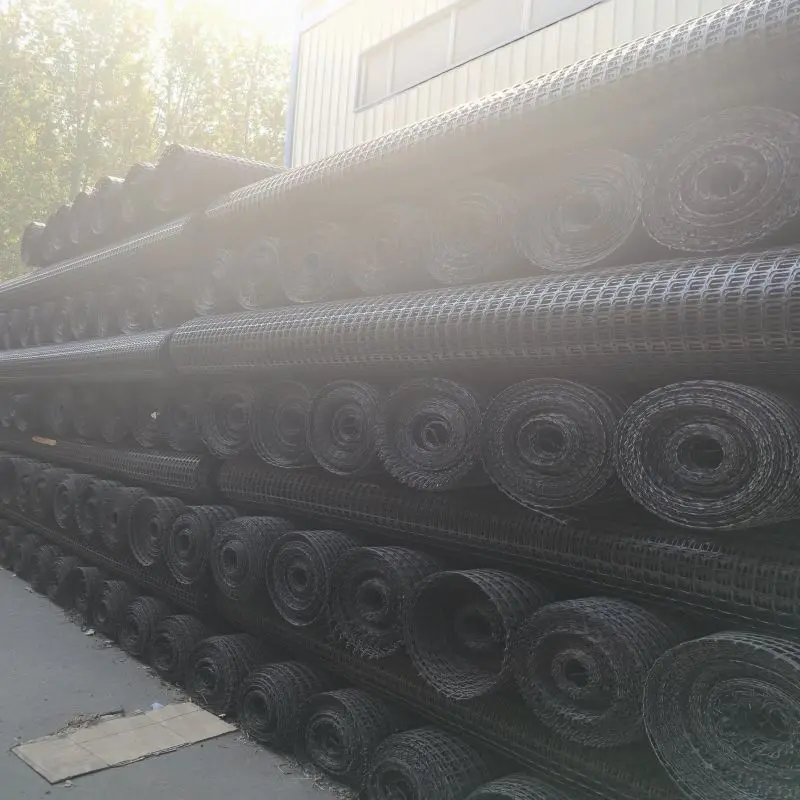
Fiberglass geogrids play a crucial role in the stabilization of base layers in various construction projects. Their high tensile strength, low elongation, thermal stability, and chemical resistance make them an excellent choice for reinforcing base layers, improving load distribution, and enhancing the overall performance and longevity of pavements. By incorporating fiberglass geogrids into base stabilization efforts, engineers can achieve more durable, cost-effective, and environmentally friendly infrastructure.
Technical Parameters of Fiberglass Geogrid for Base Stabilization
Here is a table displaying the typical technical parameters of fiberglass geogrid used for base stabilization:
| Parameter | Specification |
|---|---|
| Material | Fiberglass |
| Tensile Strength (MD) | 50 kN/m to 200 kN/m |
| Tensile Strength (CMD) | 50 kN/m to 200 kN/m |
| Elongation at Break | ≤ 3% |
| Mesh Size | 25.4 mm x 25.4 mm to 50 mm x 50 mm |
| Width | 1 m to 6 m |
| Roll Length | 50 m to 100 m |
| Coating | Polymeric or Bituminous |
| Thermal Stability | Up to 200°C |
| Chemical Resistance | Excellent |
| UV Resistance | High |
| Aperture Size | 12.7 mm x 12.7 mm to 40 mm x 40 mm |
| Weight | 300 g/m² to 600 g/m² |
| Tensile Modulus | High |
| Dimensional Stability | Excellent |
| Durability | High |
| Water Absorption | Negligible |
Manufacturing Standards for Fiberglass Geogrid for Base Stabilization
345665.webp)
Fiberglass geogrids used for base stabilization must adhere to several manufacturing standards to ensure quality, performance, and safety. These standards are established by international and national organizations and provide guidelines for the production, testing, and application of geogrids. Below are some of the key manufacturing standards:
International Standards
ISO 9001: Quality Management Systems
Ensures that the manufacturing process follows a systematic approach to quality management, including continuous improvement and customer satisfaction.
ISO 10318: Geosynthetics Terminology
Provides a comprehensive terminology for geosynthetics, ensuring consistent definitions and understanding across the industry.
ISO 13431: Geotextiles and Geotextile-Related Products
Specifies methods for determining the tensile properties of geogrids, including tensile strength and elongation.
European Standards
EN 13249: Geotextiles and Geotextile-Related Products
This standard specifies the required properties for geotextiles used in the construction of roads and other trafficked areas.
EN 13250: Geotextiles and Geotextile-Related Products
Specifies properties required for geotextiles used in railways.
EN 13251: Geotextiles and Geotextile-Related Products
Defines the properties required for geotextiles used in earthworks, foundations, and retaining structures.
American Standards
ASTM D6637: Standard Test Method for Determining Tensile Properties of Geogrids by the Single or Multi-Rib Tensile Method
Provides a standardized method for testing the tensile properties of geogrids, ensuring consistent and reliable results.
ASTM D5262: Standard Test Method for Evaluating the Unconfined Tension Creep and Creep Rupture Behavior of Geosynthetics
Evaluates the long-term performance of geogrids under sustained tensile loads.
ASTM D5818: Standard Practice for Exposure and Retrieval of Samples to Evaluate Installation Damage of Geosynthetics
Assesses the durability of geogrids by simulating real-world installation conditions and evaluating potential damage.
Chinese Standards
GB/T 17689: Geosynthetics - Test Method for Tensile Properties of Geogrids
Chinese national standard for testing the tensile properties of geogrids, ensuring compliance with local regulations and performance requirements.
GB/T 19274: Geosynthetics - Test Method for Determining the Long-Term Flow Rate of Geotextiles and Geotextile-Related Products
Evaluates the long-term flow rate of geotextiles and geogrids, ensuring their effectiveness in drainage applications.
GB/T 17638: Geosynthetics - Test Method for Determining the Coefficient of Friction of Geosynthetics
Measures the coefficient of friction of geogrids to assess their performance in stabilizing and reinforcing soil.
Additional Guidelines and Certifications
CE Marking
Indicates that the product complies with the health, safety, and environmental protection standards for products sold within the European Economic Area (EEA).
NTPEP (National Transportation Product Evaluation Program)
A program by the American Association of State Highway and Transportation Officials (AASHTO) that evaluates transportation products, including geogrids, to ensure they meet the necessary performance criteria.
Geosynthetic Institute (GSI) Standards
Provides various guidelines and test methods for geosynthetics, including geogrids, to ensure they meet industry standards for quality and performance.
Conclusion
The manufacturing standards for fiberglass geogrids for base stabilization ensure that these products meet the required quality, performance, and safety criteria. By adhering to international, regional, and national standards, manufacturers can produce high-quality geogrids that provide effective reinforcement, durability, and long-term performance in various civil engineering applications. These standards also facilitate consistency and reliability across the industry, ensuring that engineers and project managers can trust the materials they use in their construction projects.
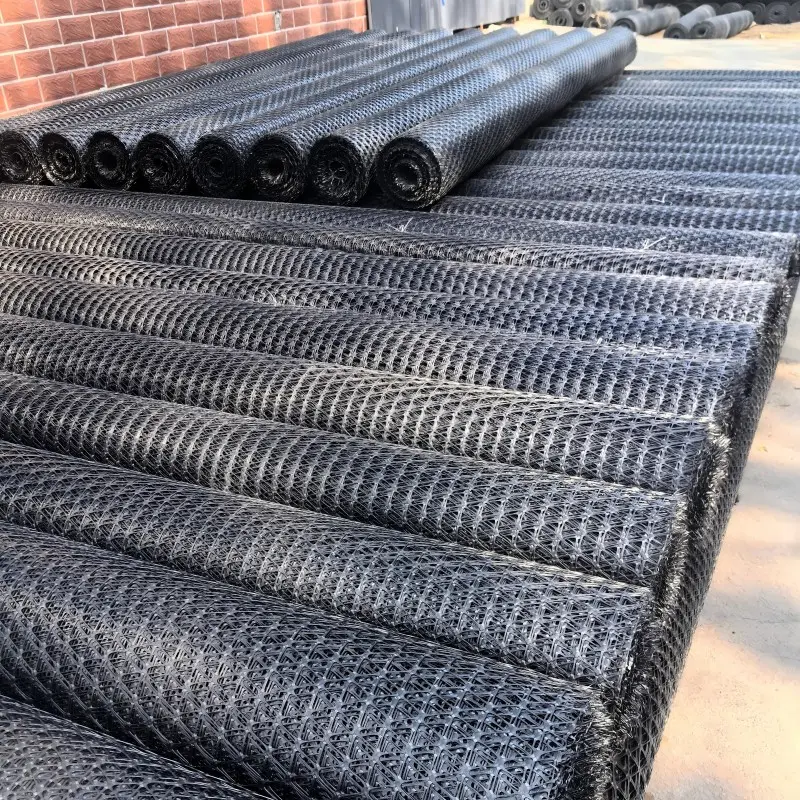
 (1)794.webp)
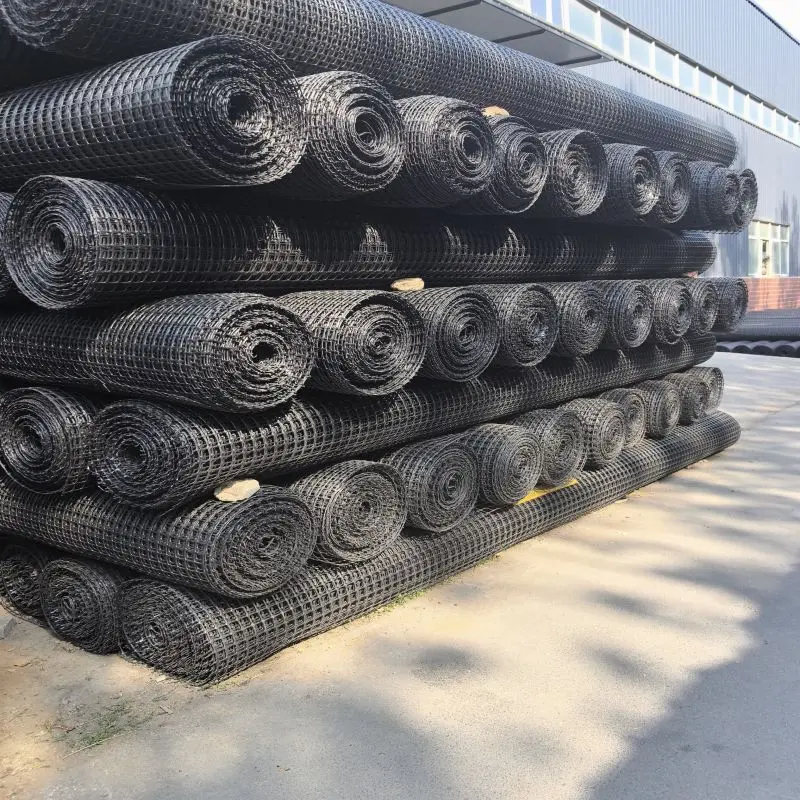
503.webp)
759.webp)
